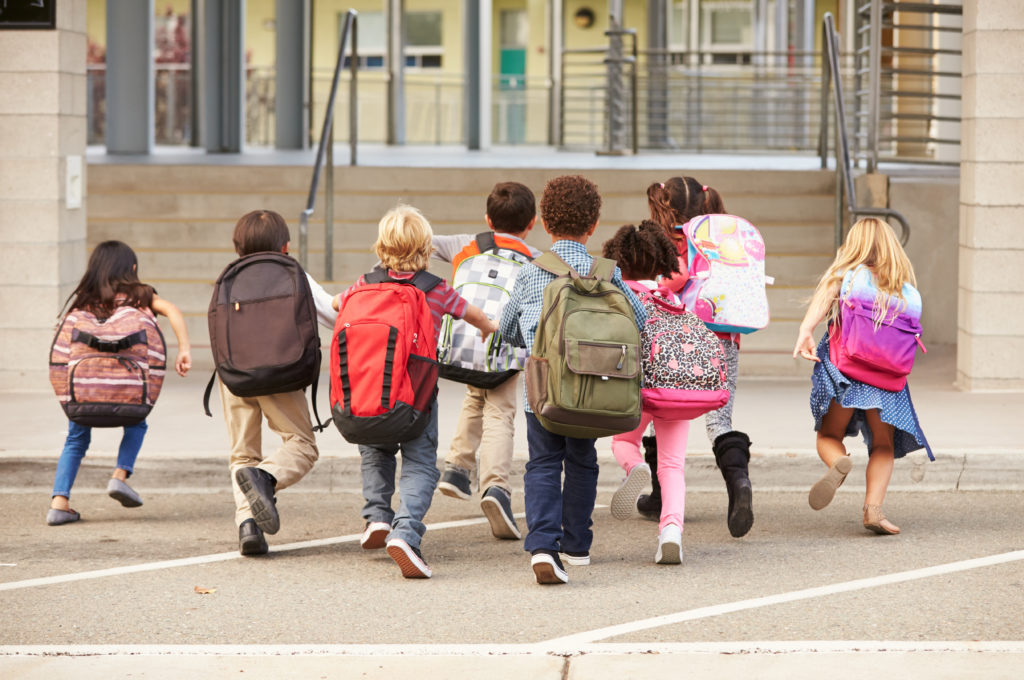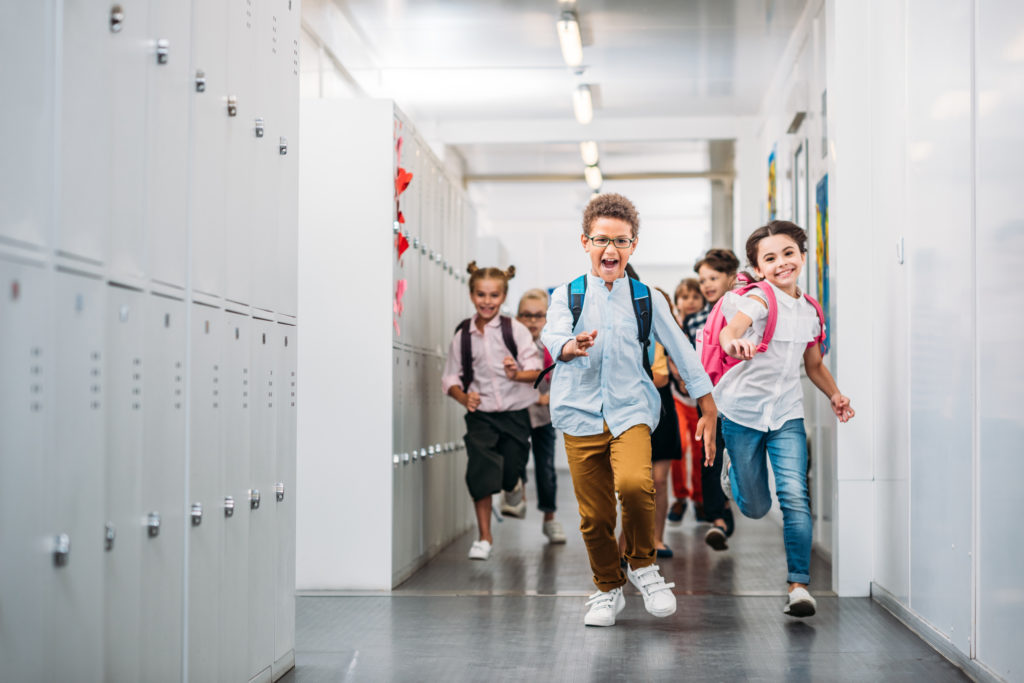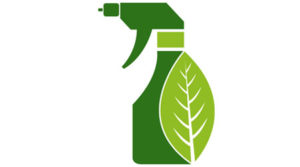The Rebuild America’s School Act – An Ambitious Bill to Fund Infrastructure Needs in Schools
On January 30, 2019, Senator Jack Reed (D-RI), Congressman Bobby Scott (VA-03), and Congressman Donald Norcross (NJ-01) introduced a landmark piece of legislation, the Rebuild America’s Schools Act (H.R. 865), proposing to invest $100 billion in rebuilding America’s public schools.

How does the bill work?
The Rebuild America’s Schools Act (H.R.865) would fund $70 billion in grants and $30 billion in bonds to help address critical physical and digital infrastructure needs in schools across the country. According to economic projections, the bill would also create more than 1.9 million good-paying jobs (1). This Act proposes to:
- Create a $70 billion grant program and $30 billion tax credit bond program targeted at high-poverty schools with facilities that pose health and safety risks to students and staff.
- Leverage federal, state, and local resources for an overall investment of $107 billion, creating over 1.9 million jobs, based on an Economic Policy Institute analysis that each $1 billion spent on construction creates 17,785 jobs.
- Develop a comprehensive national database on the condition of public school facilities; such a national database currently does not exist and would provide much-needed insight into the condition of our public schools.
- Expand access to high-speed broadband to ensure that public schools have the reliable and high-speed Internet access they need for digital learning.
What does this mean for Pennsylvania public schools?
According to projections by the [Re]Build America’s School Infrastructure Coalition, BASIC, if the Rebuild America’s Schools Act were to pass, Pennsylvania schools can expect to see:
| Direct Grants: | $2.82B | |
| Bonds: | $1,207.34M | |
| Total Federal Funding: | $4.03B ($2,481/student) | |
| Jobs created: | 72T,515 |
Taken from BASIC’s Opportunities page (2).
According to our State of the Schools Report, pulling data from over 150 public school districts in Western Pennsylvania, the average school building was built in 1952, with the oldest one in the study built in 1879. This means that the average age of our school buildings, 67 years, is over 2 decades older than the national average (45 years old). The largest federal funding increase for school improvement projects was in 2009 (3). To read more about the environmental health of our schools, check out our free report here.

What can I do to support this bill?
The Rebuild America’s Public Schools Act will be the first commitment of federal funds for public school buildings since the 1980s. You and your schools can champion this important piece of legislation and give it momentum to move forward. We need to advocate for healthy schools for every child – more and more research confirms that the environments in which kids learn is proven to affect their health, their thinking, and their performance.
There are several steps you can take to show your support for this bill!
- Get your school or district to join the BASIC Coalition to stay up-to-date on the progress of the Rebuild America’s Schools Act!
- Send letters in support or written testimony for the Rebuild America’s School Act legislation to Loredana.Valtierra@mail.house.gov with subject line, Support for Rebuild America’s School Act by Feb. 23rd to be included in the public hearing taking place on Feb. 12th.
- Is your school or district constructing or renovating their school buildings? Partner with Healthy Schools PA to receive free technical assistance and consulting to ensure that students and staff health is protected during these capital improvement projects.
References
- Press Release. Education and Labor Committee, House of Representatives (1/30/2019).
- BASIC Coalition. State by State Data (accessed 2/14/2019)
- State of Environmental Health in SW PA Schools. Healthy Schools PA. (accessed 2/14/2019)
January is National Radon Action Month!
January is National Radon Action Month! Read on below to learn more about radon and what you can do to limit or prevent radon exposure for your family.
What is radon?
Radon is an odorless, colorless gas that comes from the natural (radioactive) breakdown of uranium in soil, rock and water and gets into the air you breathe (1). Radon gas is released all over the country, but some states like Pennsylvania, have a higher radon risk because of their geographical make-up.

(Photo courtesy of Radon Detection and Control)
How does radon affect my or my children’s health?
Radon, when inhaled in large quantities over time, can directly impact your lung health. In fact, radon is the second leading cause of lung cancer, after tobacco use. Radon is responsible for about 21,000 lung cancer deaths every year. About 2,900 of these deaths occur among people who have never smoked. Children are particularly vulnerable, since they breathe in more air per volume and spend more of their time indoors in homes, day cares, and schools. Radon exposure is entirely preventable with effective action (2).
How am I or my children exposed to radon?
The only way to measure radon exposure is to test for radon in your indoor environments. Radon can get into any type of building—homes, offices, and schools—and result in a high indoor radon level. But you and your family are most likely to get your greatest exposure at home, where you spend most of your time (1). Radon exposure through aging school buildings is a growing concern. Currently, radon testing in schools is only required in 9 states – and not all regulations are written the same (3, 4).
What can I do today to protect myself and my family from radon exposure?
You can test your home today by purchasing a radon test kit. For more information on radon testing, click here. If you do find levels of radon in your home above the upper limit of 4 pci/L, use a certified radon mitigator to help vent the radon gas out of your home. For a list of qualified radon mitigation companies near you, click here.
Has your child’s school or day care center tested for radon? If not, we can help them get started. Give us a call or send us an email – we’d be more than happy to help!
References:
Happy, Healthy Holidays
Spending time with loved ones brings so much joy to the holiday season. While you celebrate this holiday, there are many fun, cost-effective, and healthy activities that allow you to spend quality time with one another. Read on for some fun ideas for creating happy, healthy memories together!
- Celebrate Traditions Together
What is a special tradition your family shares during the holidays? Whether it is sitting down and reflecting on your year together, decorating your home or your tree, or making home-made holiday cards or gingerbread houses – there is so much opportunity for sharing stories through family traditions. Instead of purchasing new decorations – can you craft some together? Instead of buying a tin of holiday cookies – can you bake and decorate them together? Taking some time to plan to do these activities from scratch can cut down on unnecessary waste and costs and increase the amount of quality time together! Why not start a new tradition this holiday season by checking out these zero waste holiday crafts?
- Volunteer

Spending an afternoon or weekend morning volunteering makes for a nice change of pace during the bustling holiday season. Taking time to give back to others through your time and effort is a form of positive role-modeling, and will allow you and your family a chance to discuss how you live and practice your values. Sorting donations at a food bank, serving a meal at a church or shelter, sorting warm used clothes for the homeless – these are just a few ways you and your family can make a difference this holiday season. See what local volunteer opportunities exist in your area here. - Get Active
Although winter is a fantastic time to stretch out by the fire, cuddle up with your pets, and read a good book; with so little daylight available, we should bundle up and venture outdoors to make use of those precious hours! Many state and national parks remain open during the winter season – often with reduced parking or admission fees. Taking a hike together as a family can be a fun way to spend time outdoors, explore your local parks, and get active in the winter season. Our suggestion? Write up a nature-based ‘scavenger hunt’ list before you head out. Who can spot the first owl? How about some mistletoe? Who can find the largest pinecone? Adding this fun, free challenge can liven up a hike down a trail you’ve been down before. (Image taken from CBC.ca)
(Image taken from CBC.ca) - Eat Healthy
It can take a large effort to keep up with healthy eating habits during the holiday season. While the dessert trays and tablespreads look absolutely scrumptious – don’t forget the fruits and veggies. Studies show that children will eat twice as much fruit if you make it visible to them. Provide a variety of healthy snacks throughout the day – and it’ll make those sugar cookies that much sweeter.
(Image from Butter with a Side of Bread Food Blog) - Get Enough Sleep!
With all the holiday excitement, it can be difficult for children (and parents!) to unwind from the festivities and get a good night’s rest. As much as possible, try to stick to your child’s regular bedtime schedule as often as possible to avoid potential grumpiness and hyperactivity the next day. Learn more about how much sleep kids need.
Happy Holidays to you and yours! We’ll see you in the New Year!
Making the Case for Green Cleaning
All schools have a responsibility to create healthy learning environments. Custodial staff are often the first line of defense in protecting the health of our students and staff. By cleaning a building effectively, they are ensuring that schools and learning centers are free from germs that spread disease, and improve air quality within a school.
However, many traditional cleaning products and equipment are not as safe as we once assumed. They smell, release chemicals into the air, and can cause burns or injury to staff if they are not handled properly. Green cleaning can be a great addition to a maintenance program because it implements practices, products, and equipment that have two goals: to protect human health, and to protect the environment. Green cleaning is effective, safe, environmentally-friendly, and cost-effective.
Green Cleaning is Effective
In trials between traditional cleaning and third-party certified green cleaning products, green cleaning products performed just as well as traditional ones. Green cleaning equipment, such as microfiber cloths and electronic sprayers for disinfectant, allow custodians to clean more efficiently by covering a bigger area in less time – an important consideration.

Green Cleaning is Safer
Janitors are injured on the job more than twice the average injury rate for all workers. By using less products through green cleaning, janitors can reduce their risk of injury on the job.
The University of Georgia compared the absences of their custodians before and after implementing
green cleaning and found a dramatic decrease in absences. When injuries did happen, they were
less serious in nature. In the San Diego Unified School District noticed less illness and allergies among the maintenance staff after they switched to green cleaning. They attributed it to safer cleaning chemicals.
Green cleaning can also protect the health of students. After Pennsylvania’s Blackhawk School District began a green cleaning program, they tracked school absenteeism. Six months into the program, they documented less absenteeism and fewer asthma attacks.
Green Cleaning is Environmentally-Friendly
By considering pollution prevention early on in the purchasing process, green cleaning programs emphasize a need to consider the waste produced by cleaning products, much of which is non-recyclable. Green cleaning also prioritizes reducing the amount of chemicals in products, using less toxic chemicals, and using chemicals that can easily be diluted with just water.
Green Cleaning is Cost-Effectiv
Green cleaning programs have proven, time and time again, to be cost-neutral if not more cost-effective for schools. When Columbia Public Schools in Missouri started their Green Cleaning program in 2009, they reduced the amount of cleaning products used, made simple changes to their cleaning practices, and modified floor finish products (which make up a lot of cleaning budgets). They saved almost 30% of their budget, and reinvested that money into purchasing green cleaning equipment such as microfiber cloths and wet mop systems.
In San Diego’s Unified School District, their budget was reduced by 20% after they negotiated a 2 year contract with their vendor to lock in prices. They switched to using products from one line of chemicals, and implemented a dilution control system to reduce the waste of products.
Final Thoughts
When schools aren’t cleaned properly, we accelerate the deterioration and reduce the efficiency of the school’s physical plant and equipment. Investing in green cleaning programs can help us maintain our school buildings, as well as protect the health of the people who work, learn, and play in them.
Many schools are already using some aspects of green cleaning as part of their maintenance practices. Making the switch to green cleaning is the smart choice – it reduces the toxic chemical burden of traditional cleaning products with more efficient, safer, and effective products, practices, and equipment.

Want to start a green cleaning program at your school but unsure where to start? Send us an email – we’re happy to help!
References:
Promoting Green Cleaning in Healthy Schools
Maryland Environmental Health Network: Green Cleaning in Schools Toolkit
Delayed School Start Dates Underscore Need for Proper Indoor Air Quality
Hundreds of students got unexpected news as they geared up for back to school – their first day for the 2018-2019 school year was pushed back. While many kids were celebrating an extended summer vacation, many parents and community members were left with questions about the conditions of school buildings.
The cause of the delay? Problems with indoor air quality, mold, and damage caused from the hot weather. These issues affected school start dates in seven districts across southwestern Pennsylvania, including:
| School District | Schools | Environmental Hazard Found | Action Taken |
| Shaler | High School | Spores found in air quality tests | Delayed opening to Sept. 4 |
| Highlands | High School | Mold | Delayed opening to Sept. 4 |
| Plum-Borough | High School, Obleck Middle School | Mold found in 3 classrooms | Delayed opening for the district to Sept. 4 |
| Mt. Pleasant | Junior-Senior High School | Water damage around windows causing mold | Delayed opening to Sept. 4; remediation on going through Reynold’s Restoration |
| Pine-Richland | Hance Elementary School | Mold on ceilings | Moved to Eden Hall Elementary School while remediation occurs |
| Southmoreland | High School | Air quality | Remediation ongoing |
| North Allegheny | McKnight Elementary School | Mold in classrooms | Children moved from affected areas; remediation on-going by AGX Environmental Consultants |
While these issues are not uncommon at the end of the summer, there are ways schools and school districts can prevent them. The Environmental Protection Agency published guidelines, titled “Tools for Schools” that help schools create and implement healthy indoor air quality plans. Under these guidelines are several resources intended to help members of a school community – from teachers, to students; to parents and facilities directors – to make informed decisions to protect children’s health.
Children spend up to 1,000 hours in school every year. We must all do what we can to protect the environments in which they live, learn, and play. The first step is getting informed and pursuing preventive strategies, rather than just remediation once a problem has been identified. Together, we can take important steps to ensure delayed school starts are prevented.
Back to School Updates
Pennsylvania New School Code
The new School Code was passed by the General Assembly, signed off by Gov. Tom Wolf, and includes testing for the presence of lead in school drinking water for the 2018-2019 school year. The School Code now states that if testing results show lead levels that are unacceptable according to U.S. Environmental Protection Agency standards, the school must produce a remediation plan and provide alternative drinking water until retesting reveals acceptable levels. If a school district chooses to forgo the testing of their water this school year, the school district must hold a public hearing to further discuss lead within school facilities. To read the full bill (Section 742),
CLICK HERE!
Two Western PA Schools Honored as Green Ribbon Schools
In 2017-2018 we had 30 schools throughout Allegheny County participate in our program. Two of our schools even went on to receive designations as 2018 Green Ribbon Schools: Mount Lebanon High School and Wexford Elementary School. Both of these schools participated in our Healthy Schools Recognition Program for a number of years and received our highest level of High Honor Roll with Distinction!
Please congratulate these two fine schools and all they have accomplished! They will be recognized in Washington, DC on September 19, 2018 for their Green Ribbon School status!
Back to School Supplies
How can we ensure this school year is as healthy for your students and staff as possible? There are several ways Healthy Schools PA can help you!
We have prepared this “Healthy Back to School Checklist” to provide you with tools and tips for choosing safer products to fill your classrooms. And check out US PIRG Education Fund’s “Safer School Supplies: Shopping Guide” to ensure the right products come into your school buildings!
Take Action Today!
If your school is in need of testing for lead in drinking water, please see our 1000 Hours a Year grant program! We have a limited number of mini grants available!
